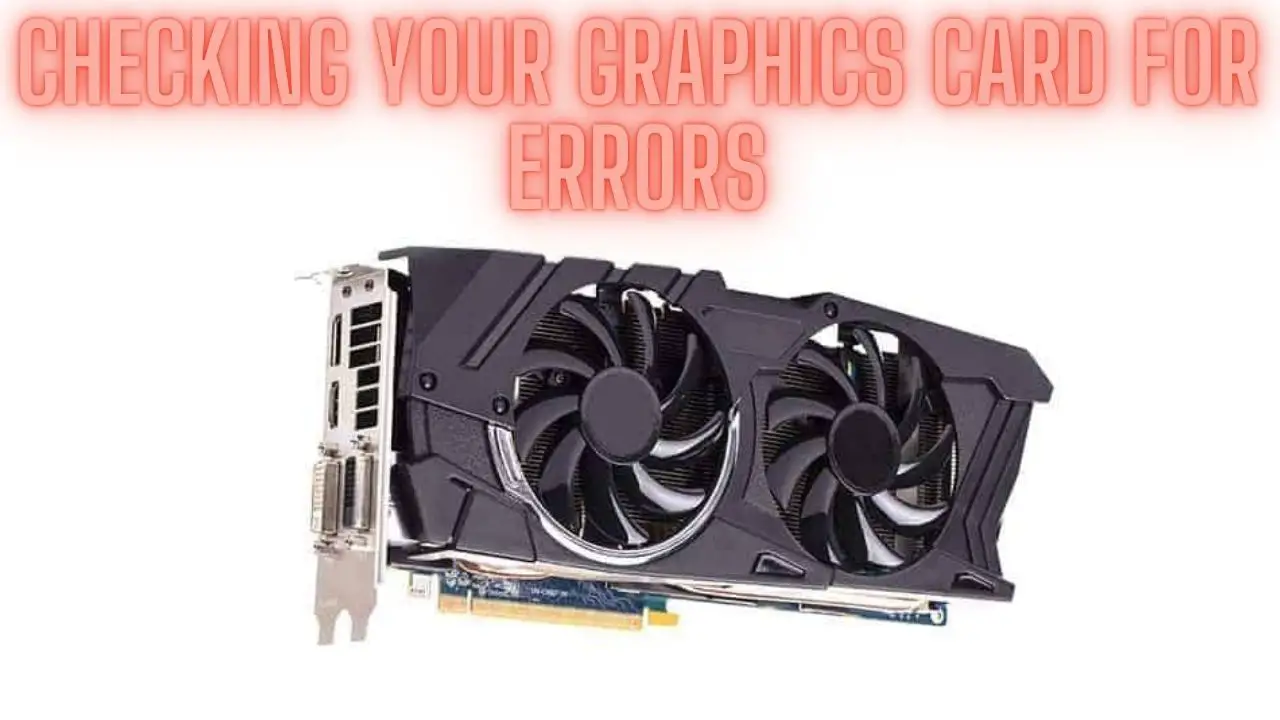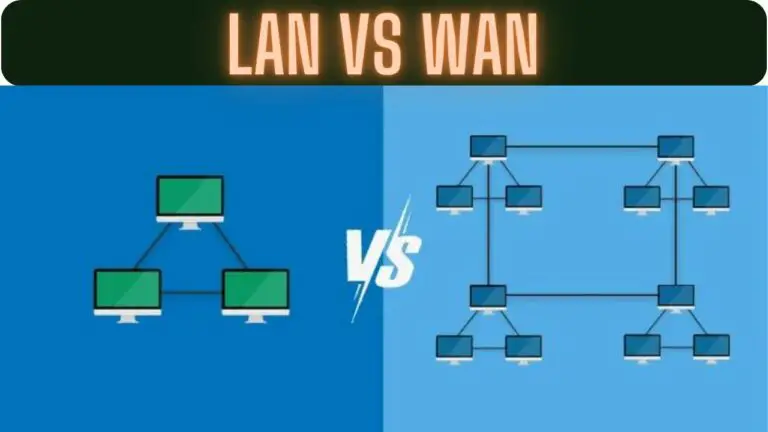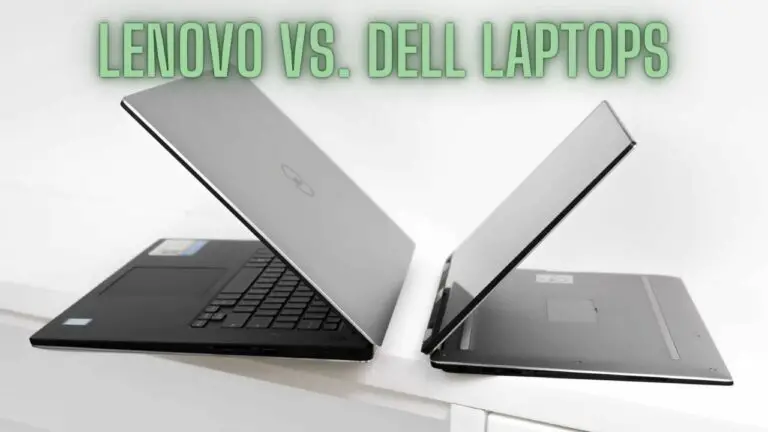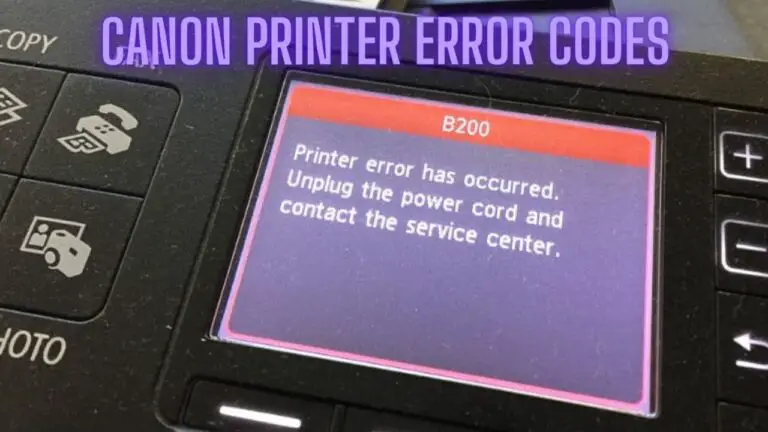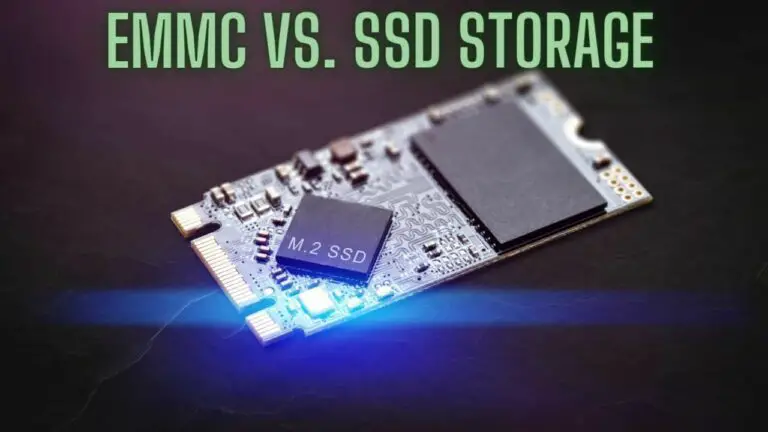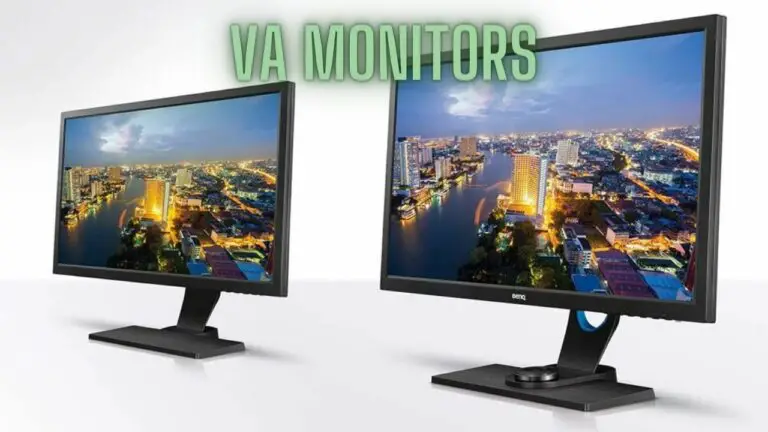Checking Your Graphics Card for Errors: How It Works
Introduction
Your graphics card plays a crucial role in rendering graphics-intensive applications, including video games, graphic design software, and multimedia content. Ensuring the health and stability of your graphics card is essential for maintaining optimal performance and avoiding potential issues such as crashes, artifacts, and system instability.
This guide will walk you through the process of checking your graphics card for errors, providing valuable insights into diagnosing common issues and ensuring the proper functioning of your GPU (Graphics Processing Unit). Whether you’re experiencing performance issues, graphical glitches, or simply want to ensure the longevity of your hardware, performing regular checks and diagnostics can help identify and address potential problems before they escalate.
In the following sections, we’ll explore the importance of graphics card health, common issues that may arise, how to prepare for diagnostic checks, the use of diagnostic software tools, running diagnostic tests, interpreting results, addressing common issues, and seeking professional assistance when necessary.
By following the guidance provided in this guide, you’ll be equipped with the knowledge and tools needed to effectively check your graphics card for errors and maintain the stability and performance of your system. Let’s get started with understanding the importance of graphics card health and why regular maintenance is essential for optimal performance.
Importance of Graphics Card Health
Your graphics card is one of the most critical components in your computer system, particularly if you use your computer for gaming, graphic design, video editing, or other graphics-intensive tasks. Here are several reasons why the health of your graphics card is of paramount importance:
- Performance: A healthy graphics card is essential for achieving smooth and responsive performance in graphics-intensive applications. Whether you’re playing the latest video games or editing high-resolution videos, a well-functioning graphics card ensures that you can enjoy a seamless and immersive experience without lag or stuttering.
- Visual Quality: The graphics card is responsible for rendering images and visuals on your computer screen. A faulty graphics card may result in visual artifacts, glitches, or distortion, compromising the quality and clarity of on-screen graphics. Maintaining the health of your graphics card ensures that you can enjoy crisp, clear, and artifact-free visuals.
- System Stability: A malfunctioning graphics card can destabilize your entire system, leading to crashes, freezes, or system instability. Errors such as driver crashes or graphics card overheating can cause your computer to become unresponsive or shut down unexpectedly. Ensuring the health of your graphics card is essential for maintaining the stability and reliability of your system.
- Hardware Longevity: Regular maintenance and monitoring of your graphics card can help prolong its lifespan and prevent premature failure. By addressing issues such as overheating, dust accumulation, or electrical issues promptly, you can extend the longevity of your graphics card and avoid costly repairs or replacements in the future.
- User Experience: A well-functioning graphics card contributes to a positive user experience by providing smooth, responsive, and visually appealing performance. Whether you’re gaming, streaming multimedia content, or working on creative projects, a healthy graphics card enhances your overall computing experience and productivity.
- Cost-Efficiency: Addressing minor issues with your graphics card early on can prevent more significant problems down the line, potentially saving you time and money on repairs or replacements. Regular maintenance and diagnostic checks help identify and resolve issues proactively, minimizing the risk of costly repairs or system downtime.
Overall, maintaining the health of your graphics card is essential for ensuring optimal performance, visual quality, system stability, hardware longevity, user experience, and cost-efficiency. By regularly monitoring and addressing potential issues with your graphics card, you can maximize the performance and reliability of your computer system for years to come.
Understanding Common Graphics Card Issues
Graphics cards, like any other hardware component, can encounter various issues that affect performance, stability, and overall functionality. Understanding these common graphics card issues can help you diagnose and address problems effectively. Here are some of the most prevalent issues:
- Overheating:
- Overheating is a common issue with graphics cards, especially under heavy load or inadequate cooling. Excessive heat can cause the graphics card to throttle performance, leading to reduced frame rates, system instability, and potential hardware damage.
- Artifacting and Visual Glitches:
- Artifacting refers to visual anomalies such as flickering, screen tearing, artifacts, or distorted textures displayed on-screen. These glitches can occur due to various factors, including defective hardware, outdated drivers, overheating, or insufficient power supply.
- Driver Issues:
- Graphics card drivers play a crucial role in ensuring compatibility, performance, and stability. Outdated, corrupted, or incompatible drivers can cause a range of issues, including crashes, graphical glitches, and performance degradation. It’s essential to keep your graphics card drivers up-to-date to avoid potential problems.
- Screen Freezing or Crashing:
- Screen freezing or crashing is another common issue that can occur with graphics cards. This problem may manifest as the screen freezing, becoming unresponsive, or the system crashing to a blue screen (BSOD) or black screen. It can be caused by various factors, including driver issues, hardware conflicts, overheating, or insufficient power supply.
- Poor Performance:
- Poor performance, such as low frame rates, stuttering, or lag, can significantly impact the gaming or multimedia experience. This issue may stem from factors such as outdated drivers, hardware limitations, software conflicts, or inadequate system resources. Optimizing graphics settings, updating drivers, and monitoring system performance can help improve performance.
- Screen Flickering:
- Screen flickering is characterized by rapid, intermittent changes in brightness or color on the display. This issue can be caused by a faulty graphics card, loose cable connections, outdated drivers, or software conflicts. Troubleshooting steps may include checking cable connections, updating drivers, or testing the graphics card in another system.
- Fan Noise or Failure:
- Graphics cards with cooling fans may experience fan noise or failure over time. Excessive noise from the fans can indicate dust accumulation, worn bearings, or inadequate cooling. A failed fan can lead to overheating and performance issues. Regular cleaning and maintenance of the cooling system can help prevent fan-related issues.
Understanding these common graphics card issues can help you identify and address problems effectively. Whether you’re troubleshooting performance issues, graphical glitches, or system instability, knowing the potential causes can guide you in finding the appropriate solutions and maintaining the health of your graphics card.
Preparing for Diagnostic Checks
Before performing diagnostic checks on your graphics card, it’s essential to make necessary preparations to ensure accurate and effective testing. Here are some steps to take when preparing for diagnostic checks:
- Gathering Necessary Tools:
- Ensure you have the necessary tools and software for conducting diagnostic checks on your graphics card. This may include diagnostic software tools, temperature monitoring programs, and stress testing utilities. Download and install these tools if you haven’t already.
- Backup Important Data:
- Before running diagnostic checks that involve stress testing or potentially risky procedures, back up any important data on your computer. This precaution helps prevent data loss in case of unexpected issues or system crashes during testing.
- Ensure Proper Ventilation and Cooling:
- Proper ventilation and cooling are essential for maintaining the health of your graphics card, especially during diagnostic checks that may stress the GPU. Ensure that your computer case has adequate airflow and that the graphics card’s cooling system (fans or heatsinks) is clean and free of dust buildup.
- Update Graphics Card Drivers:
- Ensure that your graphics card drivers are up-to-date before conducting diagnostic checks. Outdated or incompatible drivers can affect the accuracy of diagnostic results and may cause issues during testing. Visit the website of your graphics card manufacturer to download and install the latest drivers.
- Create a Testing Environment:
- Set up a testing environment where you can perform diagnostic checks without interruptions. Ensure that the environment is free of distractions and that you have sufficient time to complete the testing process without rushing.
- Refer to Documentation:
- Familiarize yourself with the documentation provided by the manufacturer of your graphics card and any diagnostic software tools you plan to use. Understanding the features, capabilities, and recommended testing procedures can help you conduct diagnostic checks effectively.
- Check for Warranty Coverage:
- If your graphics card is still under warranty, check the warranty coverage and terms before conducting diagnostic checks or attempting any repairs. Some diagnostic procedures or modifications may void the warranty, so it’s essential to be aware of any restrictions or limitations.
By taking these preparatory steps, you can ensure that your diagnostic checks are conducted accurately and safely. Proper preparation helps minimize the risk of data loss, hardware damage, or other issues during testing and enables you to diagnose and address potential problems with your graphics card effectively.
Diagnostic Software Tools
When diagnosing issues with your graphics card, various software tools can help you monitor its performance, temperature, and overall health. Here are some commonly used diagnostic software tools for testing and troubleshooting graphics card issues:
- GPU-Z:
- GPU-Z is a lightweight utility designed to provide detailed information about your graphics card’s specifications, temperature, clock speeds, and more. It also allows you to monitor real-time GPU usage and voltage readings. GPU-Z is useful for identifying the model, BIOS version, and other important details of your graphics card.
- MSI Afterburner:
- MSI Afterburner is a popular overclocking utility that also includes monitoring and diagnostic features for graphics cards. It allows you to adjust GPU core clock, memory clock, voltage, and fan speed settings. Additionally, MSI Afterburner provides real-time monitoring of temperature, usage, and performance metrics, making it a versatile tool for both enthusiasts and casual users.
- HWiNFO:
- HWiNFO is a comprehensive system information and diagnostic tool that provides detailed hardware monitoring capabilities, including support for graphics cards. It offers real-time monitoring of various parameters such as temperatures, voltages, fan speeds, and usage statistics for your graphics card and other system components. HWiNFO also generates detailed reports and logs for further analysis.
- FurMark:
- FurMark is a popular GPU stress-testing tool designed to push your graphics card to its limits and assess its stability under heavy load. It generates a 3D rendering of a furry object and continuously stresses the GPU, allowing you to monitor temperature, frame rates, and potential artifacts or graphical glitches. FurMark is commonly used for benchmarking and stress testing graphics cards.
- 3DMark:
- 3DMark is a comprehensive benchmarking tool that evaluates the performance of your graphics card through various synthetic tests and gaming simulations. It provides detailed performance scores, frame rates, and graphical fidelity metrics for comparison with other systems. 3DMark offers different benchmarking tests tailored for different hardware configurations and gaming scenarios.
- Heaven Benchmark:
- Heaven Benchmark is a DirectX-based benchmarking tool designed to assess the performance and stability of your graphics card in a visually stunning environment. It features dynamic weather effects, realistic lighting, and advanced tessellation to stress test your GPU’s capabilities. Heaven Benchmark provides detailed performance metrics and scores to evaluate graphics card performance.
These diagnostic software tools offer valuable insights into the health, performance, and stability of your graphics card. Whether you’re monitoring temperature, stress-testing for stability, or benchmarking for performance comparisons, using these tools can help you diagnose and troubleshoot issues effectively. Experiment with different tools to find the ones that best suit your diagnostic needs and preferences.
Running Diagnostic Tests
Once you’ve prepared your system and installed the necessary diagnostic software tools, you can proceed to run diagnostic tests on your graphics card. These tests help assess the performance, stability, and overall health of your GPU. Here’s how to run diagnostic tests effectively:
- Temperature Monitoring:
- Use a software tool such as GPU-Z, MSI Afterburner, or HWiNFO to monitor the temperature of your graphics card in real-time. Run applications or games that stress the GPU to observe temperature fluctuations. Ensure that the temperature remains within safe operating limits and does not exceed the manufacturer’s recommended maximum temperature.
- Stress Testing:
- Run a stress-testing utility such as FurMark or Heaven Benchmark to stress test your graphics card under heavy load. These tools simulate intense graphics rendering scenarios to push the GPU to its limits. Monitor temperature, fan speed, and stability during stress testing to identify any potential issues such as overheating, artifacting, or system crashes.
- Benchmarking:
- Use benchmarking tools like 3DMark or Heaven Benchmark to evaluate the performance of your graphics card across different gaming scenarios and graphical workloads. Run benchmark tests to measure frame rates, graphical fidelity, and overall performance metrics. Compare your results with similar hardware configurations to assess the relative performance of your GPU.
- Artifact Detection:
- During stress testing or benchmarking, carefully observe the on-screen graphics for any visual anomalies or artifacts such as flickering, screen tearing, or distortion. These artifacts may indicate issues with the graphics card, such as overheating, insufficient power supply, or hardware defects. Take note of any artifacts and investigate potential causes.
- Driver Stability:
- Ensure that your graphics card drivers are up-to-date and stable. Monitor system stability during diagnostic tests to detect any crashes, freezes, or driver-related issues. If you encounter driver crashes or instability, consider updating or reinstalling your graphics card drivers to resolve the issue.
- Performance Optimization:
- Use diagnostic tests to identify performance bottlenecks or areas for optimization in your graphics card configuration. Adjust graphics settings, overclocking parameters, or system configurations based on diagnostic results to improve performance, stability, and overall user experience.
- Logging and Analysis:
- Enable logging features in diagnostic software tools to record performance metrics, temperature readings, and other relevant data during diagnostic tests. Analyze the log files and reports generated by the diagnostic tools to identify trends, patterns, or abnormalities that may require further investigation or action.
By running these diagnostic tests and carefully analyzing the results, you can gain valuable insights into the health, performance, and stability of your graphics card. Use the information gathered from diagnostic tests to troubleshoot issues, optimize performance, and ensure the longevity of your GPU. If you encounter any abnormalities or issues during testing, refer to the troubleshooting steps provided by the diagnostic software tools or seek assistance from online communities or technical support forums.
Interpreting Diagnostic Results
After running diagnostic tests on your graphics card, it’s important to interpret the results accurately to identify any potential issues or areas for improvement. Here’s how to interpret diagnostic results effectively:
- Temperature Readings:
- Pay close attention to temperature readings obtained during stress testing or heavy usage scenarios. Ensure that the GPU temperature remains within safe operating limits and does not exceed the manufacturer’s recommended maximum temperature. If temperatures are excessively high, consider improving airflow, cleaning the cooling system, or adjusting fan speeds to mitigate overheating.
- Voltage and Power Consumption:
- Monitor voltage and power consumption readings to ensure stable and consistent power delivery to the graphics card. Fluctuations or abnormalities in voltage or power consumption may indicate issues with the power supply unit (PSU), power delivery circuitry, or GPU itself. Investigate potential causes and address any issues to maintain stable performance and prevent hardware damage.
- Performance Metrics:
- Analyze performance metrics such as frame rates, graphical fidelity, and benchmark scores obtained during testing. Compare your results with similar hardware configurations or performance expectations to assess the relative performance of your graphics card. Identify any performance bottlenecks or areas for optimization and adjust settings accordingly to improve overall performance and user experience.
- Artifact Detection:
- Carefully examine the on-screen graphics for any visual anomalies or artifacts observed during stress testing or benchmarking. Common artifacts include flickering, screen tearing, distortion, or color anomalies. Artifacts may indicate issues such as overheating, insufficient power supply, or hardware defects. Take note of any artifacts and investigate potential causes to address underlying issues.
- System Stability:
- Monitor system stability during diagnostic tests to detect any crashes, freezes, or instability issues. Note any instances of system crashes or driver failures and investigate potential causes. Check event logs, error messages, and system reports for details on the nature and frequency of stability issues. Address driver-related issues, hardware conflicts, or other underlying issues to ensure system stability.
- Driver Updates and Software Optimization:
- Review the performance of your graphics card with updated drivers and optimized software settings. Compare performance metrics before and after driver updates or software optimizations to assess the impact on overall performance and stability. Ensure that you’re using the latest graphics card drivers and that software settings are configured for optimal performance and compatibility.
- Long-Term Monitoring:
- Consider implementing long-term monitoring solutions to track the health, performance, and stability of your graphics card over time. Use diagnostic software tools with logging and reporting capabilities to record performance metrics and temperature readings at regular intervals. Analyze trends, patterns, or abnormalities in diagnostic data to proactively identify potential issues and take corrective actions.
By interpreting diagnostic results accurately and comprehensively, you can gain valuable insights into the health, performance, and stability of your graphics card. Use the information obtained from diagnostic tests to troubleshoot issues, optimize performance, and ensure the longevity of your GPU. If you encounter any abnormalities or persistent issues, seek assistance from technical support resources or online communities dedicated to graphics card troubleshooting and maintenance.
Addressing Common Issues
When diagnosing graphics card issues, it’s essential to address common problems effectively to ensure optimal performance and stability. Here are some common issues and steps to address them:
- Overheating:
- Ensure proper ventilation and cooling inside your computer case to prevent overheating of the graphics card. Clean dust buildup from fans, heatsinks, and air vents regularly. Consider installing additional case fans or upgrading to a more efficient cooling solution if overheating persists. Adjust fan speeds or GPU clock speeds to reduce temperatures during heavy load scenarios.
- Artifacting and Visual Glitches:
- If you encounter artifacting or visual glitches, such as flickering, screen tearing, or distortion, first check for overheating or insufficient power supply. Ensure that your graphics card is receiving adequate power from the PSU and that all power connectors are securely connected. Update graphics card drivers to the latest version and reset overclocking settings to default values. If issues persist, consider testing the graphics card in another system or contacting the manufacturer for warranty support.
- Driver Issues:
- Address driver-related issues by updating graphics card drivers to the latest version available from the manufacturer’s website. Use a driver uninstaller utility to completely remove old or corrupted drivers before installing new ones. Check for compatibility issues with other hardware components or software applications and adjust settings or configurations as needed. Monitor system stability and performance after driver updates to ensure that issues are resolved.
- Screen Freezing or Crashing:
- If your system experiences screen freezing or crashing, check for driver conflicts, software compatibility issues, or hardware defects. Update all drivers, including graphics card drivers, chipset drivers, and system BIOS. Scan for malware or viruses that may be causing system instability. Test the graphics card in another system or use diagnostic tools to identify potential hardware defects. Consider reinstalling the operating system as a last resort if software-related issues persist.
- Poor Performance:
- Improve graphics card performance by optimizing graphics settings, adjusting overclocking parameters, or upgrading hardware components such as RAM or CPU. Update graphics card drivers and ensure that software applications are configured for optimal performance. Monitor system resources and adjust settings to balance graphical fidelity with performance. Consider upgrading to a more powerful graphics card if performance improvements are insufficient.
- Screen Flickering:
- Address screen flickering issues by checking cable connections, updating graphics card drivers, and adjusting display settings. Ensure that the monitor refresh rate is set correctly and that cables are securely connected to the graphics card and monitor. Test the monitor with another device to rule out hardware defects. If issues persist, consider replacing the monitor or graphics card as needed.
- Fan Noise or Failure:
- Address fan noise or failure by cleaning dust buildup from fans and heatsinks, ensuring proper airflow inside the computer case, and replacing worn or malfunctioning fans. Consider upgrading to aftermarket cooling solutions for improved performance and quieter operation. Monitor fan speeds and temperatures regularly to detect potential issues early and take corrective actions.
By addressing common graphics card issues effectively, you can improve performance, stability, and overall user experience. Use diagnostic tools and troubleshooting techniques to identify underlying causes and implement appropriate solutions. If issues persist despite troubleshooting efforts, consider seeking assistance from technical support resources or consulting with experienced professionals for further assistance.
Seeking Professional Assistance
If you’ve exhausted your troubleshooting efforts or encounter persistent issues with your graphics card that you’re unable to resolve on your own, seeking professional assistance may be necessary. Here are some steps to consider when seeking professional help for graphics card issues:
- Contact Manufacturer Support:
- Reach out to the manufacturer of your graphics card for technical support and assistance. Many manufacturers offer customer support services, including troubleshooting advice, warranty support, and repair or replacement services. Visit the manufacturer’s website or contact their support team via phone or email to initiate a support request.
- Visit a Computer Repair Shop:
- If you’re unable to resolve graphics card issues on your own, consider visiting a local computer repair shop or service center for professional assistance. Qualified technicians can diagnose hardware problems, perform repairs or replacements, and provide expert guidance on resolving complex issues. Research reputable repair shops in your area and inquire about their services and pricing.
- Consult with Technical Forums or Communities:
- Participate in online forums, discussion boards, or communities dedicated to computer hardware and graphics card troubleshooting. Seek advice from experienced users, enthusiasts, or technical experts who may offer valuable insights, tips, or solutions to your graphics card issues. Provide detailed information about your problem and system configuration to receive accurate assistance.
- Hire a Computer Technician:
- If you prefer personalized assistance or on-site support, consider hiring a professional computer technician or IT consultant to diagnose and resolve graphics card issues. Look for certified technicians with experience in hardware troubleshooting and repair. Discuss your requirements, expectations, and budget with the technician before scheduling an appointment.
- RMA (Return Merchandise Authorization):
- If your graphics card is still under warranty and experiencing hardware defects or malfunctions, you may be eligible for an RMA (Return Merchandise Authorization) request. Contact the manufacturer or retailer where you purchased the graphics card to initiate an RMA request. Follow their instructions for returning the product for repair, replacement, or refund according to the terms of the warranty.
- Consider Upgrading:
- If your graphics card is outdated or experiencing irreparable hardware issues, consider upgrading to a newer model or more powerful GPU. Research current graphics card options, performance benchmarks, and compatibility with your system configuration before making a purchase. Consult with professionals or online resources for recommendations on suitable upgrade options.
- Document and Backup Data:
- Before seeking professional assistance or performing any repairs or replacements, document any relevant information about your graphics card issues and back up important data on your computer. This precaution helps ensure that you have a record of the problem and safeguards your data in case of data loss during repairs or troubleshooting.
By seeking professional assistance, you can receive expert guidance and support to resolve graphics card issues effectively and restore optimal performance to your computer system. Whether contacting manufacturer support, visiting a repair shop, or consulting with technical forums, professional assistance can help address complex issues beyond the scope of DIY troubleshooting.
FAQS
Why is it important to check my graphics card for errors?
- Checking your graphics card for errors is crucial because it helps ensure your computer’s performance and stability. Errors in the graphics card can lead to performance issues, system crashes, and graphical glitches in games and applications.
How often should I check my graphics card for errors?
- You don’t need to check your graphics card for errors constantly. However, it’s a good practice to perform checks when you notice performance problems, system instability, or graphical anomalies. Additionally, regular maintenance, such as cleaning your GPU and updating drivers, can help prevent errors.
Can outdated graphics drivers cause errors in my GPU?
- Yes, outdated or incompatible graphics drivers can lead to errors in your GPU. It’s essential to keep your graphics drivers up to date to ensure optimal performance and stability.
What are some common signs of graphics card errors?
- Common signs of graphics card errors include:
- Graphic artifacts (strange colors or patterns) on the screen.
- Stuttering or low frame rates in games or applications.
- System crashes, freezes, or blue screen errors (BSOD).
- Overheating and abnormal fan behavior.
- Distorted or flickering graphics.
Are there third-party diagnostic tools available for checking graphics card errors?
- Yes, there are third-party diagnostic tools like FurMark and MSI Afterburner that can help you stress test your GPU, monitor temperatures, and identify potential issues. However, be cautious when using third-party software and ensure it’s from a reputable source.
How can I prevent my graphics card from overheating and causing errors?
- To prevent overheating, make sure your GPU is adequately cooled. Clean the GPU and its fans regularly to remove dust and debris that can obstruct airflow. Ensure that your computer case has proper ventilation, and consider adding additional cooling if necessary.
Can software conflicts cause graphics card errors?
- Yes, software conflicts, including conflicting drivers or applications, can lead to graphics card errors. If you suspect a software conflict, try updating or uninstalling conflicting software to resolve the issue.
Is it safe to overclock my graphics card to improve performance?
- Overclocking your graphics card can improve performance but may also lead to stability issues and errors if not done correctly. If you want to overclock, research safe overclocking methods, monitor temperatures, and proceed cautiously.
What should I do if I suspect a hardware issue with my graphics card?
- If you suspect a hardware issue with your graphics card, contact the manufacturer’s customer support for guidance. If your GPU is under warranty, inquire about warranty coverage and potential repairs or replacements.
Conclusion
In conclusion, regularly checking your graphics card for errors and ensuring it’s functioning correctly is essential for maintaining a smooth computing experience. By following the steps mentioned and staying vigilant for signs of trouble, you can address issues promptly and keep your GPU in good health.

